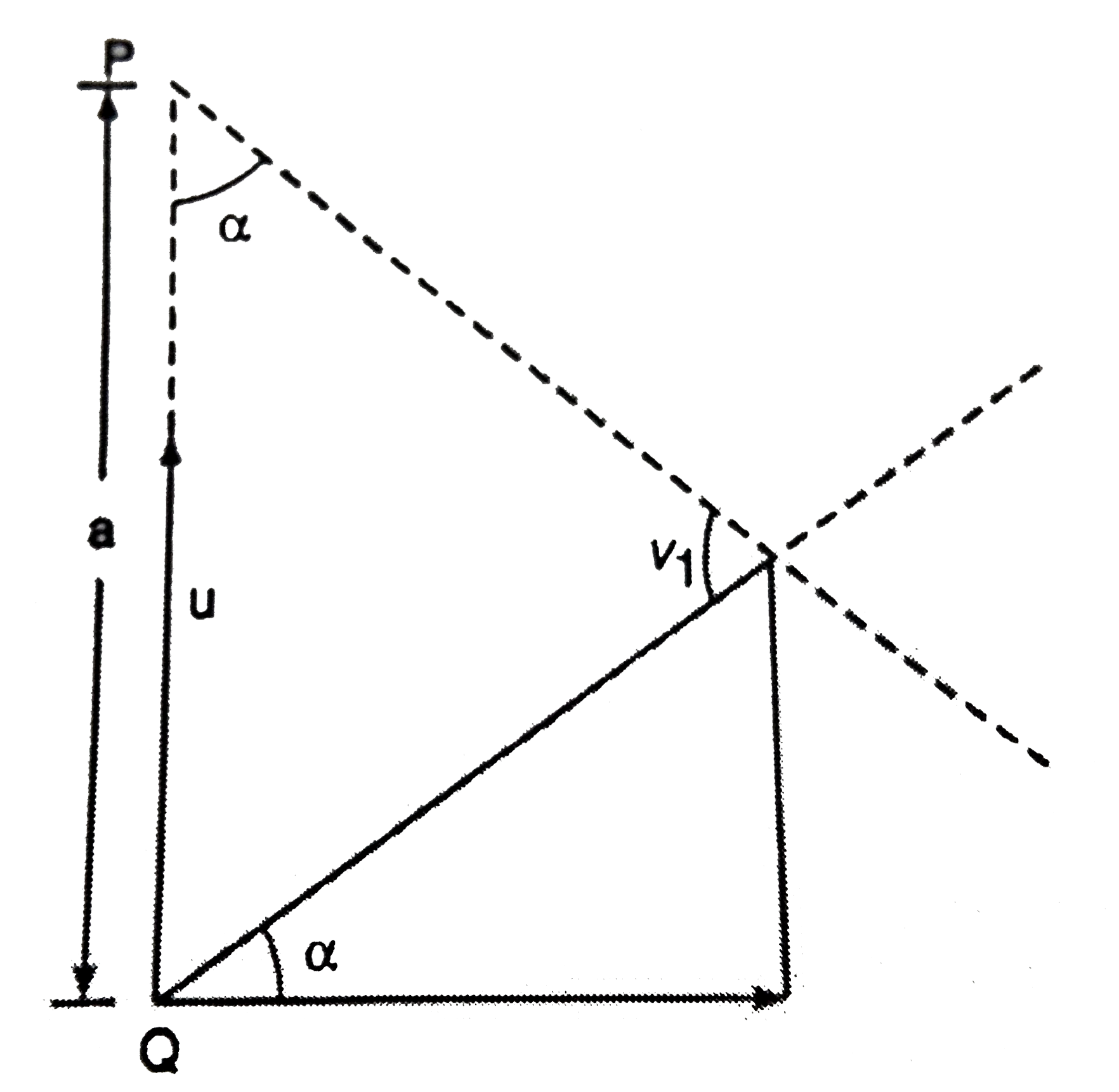The distance between two moving particles P and Q at any time is a.If vr be their relative velocity and if u and v be the components of vr, along and perpendicular to PQ.The closest distance between P and Q and time that elapses before they arrive at their nearest distance is
a(v+vr)v
(1+vru)2
av(v+vr),a(1+uvr)2
avrv,avru2
The correct Answer is:d
Assuming P top be at rest, particle Q is moving with velocity vr, in the direction shown in figure. Components of vr along and perpendicu lar to PQ are u and v respectively. In the figures.
sinα=vvr,cosα=vvr
The closest dstance between the particles is PR.
smin=PR=PQcosα=(a)(vvr)rArtmin=avvr

t=ORvr=(PQ)sinαvr=(a)vvrv4=auv2r
Topper's Solved these Questions
Similar Questions
If the distance between any two moving points at any time be a if V be their relative velocity and u and v be the components of V respectively along and perpendicular to the direction a, then their distance when they are nearest to one another is avV and the time that elapses before they arrive at their nearest distance is auV2
View SolutionIf the distance between any two moving points at any time be a if V be their relative velocity and u and v be the components of V respectively along and perpendicular to the direction a, then their distance when they are nearest to one another is avV and the time that elapses before they arrive at their nearest distance is auV2
View Solution
Knowledge Check
The resultant R of vector P andQ is perpendicular to P and R=P both , then angle betwwen |P|and|Q|is
A5π4B7π4Cπ4D3π4Two particles start moving from the same point along the same straight line. The first moves with constant velocity v and the second with constant acceleration a. During the time that elapses before the sound catches the first, the greatest distance between the particle is.
Av2aBv22aC2v2aDv24aTwo particles are moving with velocities v1andv2 . Their relative velocity is the maximum, when the angle between their velocities is
AzeroBπ/4Cπ/2Dπ
the distance between two points P and Q is 100 m.A is initially at P and B is at Q.The speeds of A and B is 20m/s and 30 m/s They move between P and Q to and fro:Find the time required for the first meeting
View SolutionTwo particles P and Q are moving with velocities of (i+j) and (−i+3j) respectively. At time t=0, P is at origin and Q is at a point with position vector (2i+j) .Then the shortest distance between P& Q is:
View SolutionThe potential difference (Vp−VQ) between the points P and Q in the part of a circuit as shown in figure is
_PHY_E05_110_Q01.png)
View SolutionTwo points of a rod move with velocity 3v and v perpendicular to the rod and in the same direction, separated by a distance r. Then the angular velocity of the rod is :
View SolutionA particle P of charge q and m , is placed at a point in gravity free to move. Another particle Q, of same charge and mass , is projected from a distance r from P with an initial speed v0 towards P , initial the distance between P and Q decreases and then increases.
What are the speeds of particles P and Q, when their separation is minimum ?
View Solution
